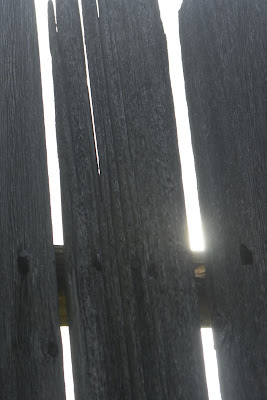I was inspired by some long exposure photos I saw in the 2010 Folios edition of “Silvershotz”. On Wednesday the overcast cloud bases were in cloud roll mode, so I thought maybe I could pull off something similar to what I saw. I got to the George Bush Nature Preserve here in Houston and went to the pond on Noble Trail. I set up the tripod, used the built-in level function on my camera, and searched my bag… I found that I left behind my 4-stop neutral density filter. I knew right away I wasn’t going to get the shots I originally wanted. Undaunted, I took a few shots anyway just to play some more with my camera.
For those who don’t know, a neutral density filter is a filter that cuts down on the amount of light that passes into the camera lens. It’s called neutral density because it does not affect the contrast or light dispersion into the lens, it just cuts down on the amount going in. It fits over the end of the lens. This allows for long exposures during bright light and will allow very narrow apertures for macro shots where a deeper depth of field is desirable.
I took a few shots and decided on my Day 6 shot and left the others to sit on my hard drive. About 24 hours had passed and I decided to take a break from my paperwork and fired up Lightroom to look at some older photos. For some reason I decided to look at yesterday’s photos first. This is the original shot here:
The initial reason for rejecting this was that it just wasn’t what I was looking for when set out to take these photos. But I learned a little while back that nothing stays the same, even 24 hours later things change. I saw something more in this photo… something dark and sinister.
The darkness of the trees in the horizon stirred the emotion in me, so I started playing with it a little bit to bring into focus the vision within my subconscious mind. There was a harshness in the winter trees that played against the soft and subtle tones of the clouds. It was almost as if I were in a dream that was descending into something more sinister. After converting the image to black and white, it really became apparent that this was the vision in my mind.
The image was still too dark to be effective. I lightened the photo but the trees now looked funny. I was able to darken the horizon and found the darkness of the trees was playing very well off the clouds, which now had a rough but wide dynamic range. The white at the top center begins to darken as you move through the image, ending in the nearly black trees. The water took away from this effect, so it was cropped out. Once I softened the clarity of the entire image, my mind’s vision was fully realized:
This now was the final image. It shows a dark and sinister path ahead, which is what my mind saw when I opened the photo again less than 24 hours after initially rejecting it. The image is entitled “Chimera Descent”.
This little exercise highlights the fact that everything in life is fluid and changes can occur rapidly. I still go through some of my old photos looking for new visions that exist within my mind. Nothing stays the same, and sometimes the things we reject contain a beauty that only comes after initial contact.
Any comments on this are welcome.




















